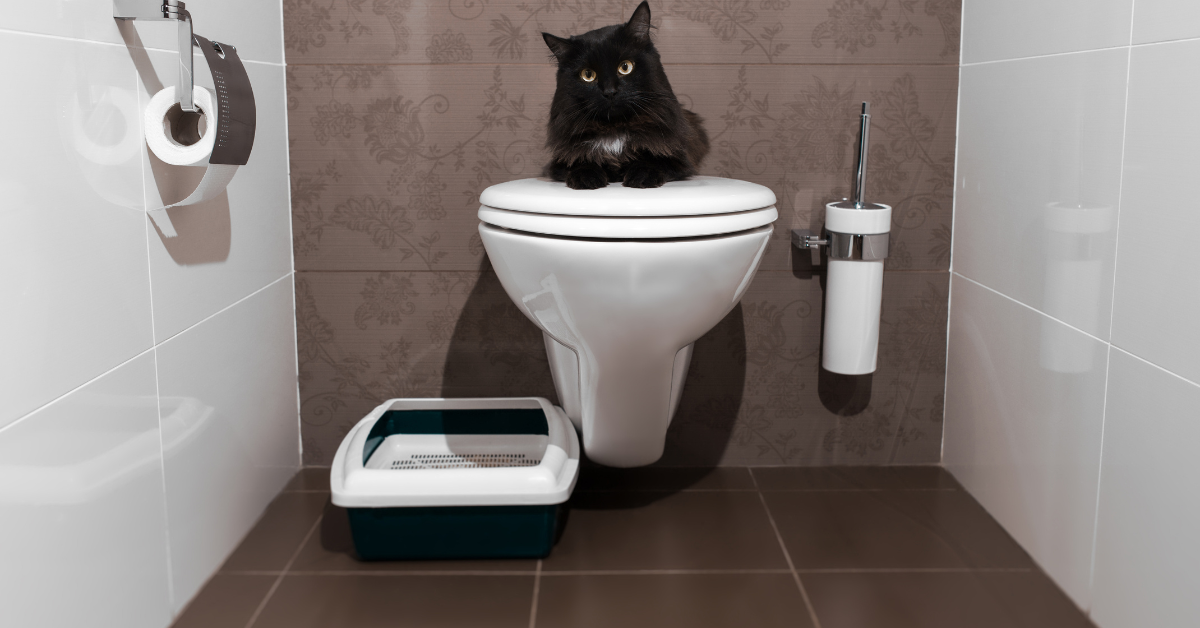Why You Mustn't Flush Cat Poop Down Your Toilet - Maintain Your Plumbing Health
Why You Mustn't Flush Cat Poop Down Your Toilet - Maintain Your Plumbing Health
Blog Article
Are you currently on the lookout for critical information on Can You Flush Cat Poo or Litter Down the Toilet??

Introduction
As pet cat owners, it's vital to be mindful of just how we get rid of our feline good friends' waste. While it may seem practical to purge cat poop down the bathroom, this technique can have harmful effects for both the environment and human health and wellness.
Environmental Impact
Purging pet cat poop presents harmful pathogens and parasites into the water, presenting a substantial threat to marine communities. These pollutants can adversely affect aquatic life and compromise water quality.
Health Risks
Along with environmental issues, purging pet cat waste can additionally present wellness risks to human beings. Feline feces might include Toxoplasma gondii, a bloodsucker that can create toxoplasmosis-- a possibly serious illness, specifically for pregnant females and individuals with damaged body immune systems.
Alternatives to Flushing
Fortunately, there are more secure and more responsible means to get rid of cat poop. Consider the complying with alternatives:
1. Scoop and Dispose in Trash
The most usual approach of taking care of cat poop is to scoop it right into an eco-friendly bag and throw it in the trash. Make sure to use a specialized clutter scoop and take care of the waste promptly.
2. Use Biodegradable Litter
Opt for eco-friendly feline litter made from products such as corn or wheat. These litters are environmentally friendly and can be securely gotten rid of in the trash.
3. Bury in the Yard
If you have a yard, think about burying pet cat waste in a designated area away from veggie yards and water resources. Be sure to dig deep sufficient to avoid contamination of groundwater.
4. Set Up a Pet Waste Disposal System
Invest in a pet waste disposal system particularly created for feline waste. These systems utilize enzymes to break down the waste, decreasing odor and ecological influence.
Final thought
Accountable animal ownership expands past offering food and shelter-- it additionally entails correct waste administration. By refraining from purging feline poop down the toilet and opting for different disposal techniques, we can minimize our ecological footprint and protect human wellness.
Why Can’t I Flush Cat Poop?
It Spreads a Parasite
Cats are frequently infected with a parasite called toxoplasma gondii. The parasite causes an infection called toxoplasmosis. It is usually harmless to cats. The parasite only uses cat poop as a host for its eggs. Otherwise, the cat’s immune system usually keeps the infection at low enough levels to maintain its own health. But it does not stop the develop of eggs. These eggs are tiny and surprisingly tough. They may survive for a year before they begin to grow. But that’s the problem.
Our wastewater system is not designed to deal with toxoplasmosis eggs. Instead, most eggs will flush from your toilet into sewers and wastewater management plants. After the sewage is treated for many other harmful things in it, it is typically released into local rivers, lakes, or oceans. Here, the toxoplasmosis eggs can find new hosts, including starfish, crabs, otters, and many other wildlife. For many, this is a significant risk to their health. Toxoplasmosis can also end up infecting water sources that are important for agriculture, which means our deer, pigs, and sheep can get infected too.
Is There Risk to Humans?
There can be a risk to human life from flushing cat poop down the toilet. If you do so, the parasites from your cat’s poop can end up in shellfish, game animals, or livestock. If this meat is then served raw or undercooked, the people who eat it can get sick.
In fact, according to the CDC, 40 million people in the United States are infected with toxoplasma gondii. They get it from exposure to infected seafood, or from some kind of cat poop contamination, like drinking from a stream that is contaminated or touching anything that has come into contact with cat poop. That includes just cleaning a cat litter box.
Most people who get infected with these parasites will not develop any symptoms. However, for pregnant women or for those with compromised immune systems, the parasite can cause severe health problems.
How to Handle Cat Poop
The best way to handle cat poop is actually to clean the box more often. The eggs that the parasite sheds will not become active until one to five days after the cat poops. That means that if you clean daily, you’re much less likely to come into direct contact with infectious eggs.
That said, always dispose of cat poop in the garbage and not down the toilet. Wash your hands before and after you clean the litter box, and bring the bag of poop right outside to your garbage bins.
https://trenchlesssolutionsusa.com/why-cant-i-flush-cat-poop/

Do you really like reading about How to Dispose of Cat Poop and Litter Without Plastic Bags? Create a comment down the page. We would be interested to listen to your ideas about this entry. We are looking forward that you visit us again in the future. Liked our blog? Please share it. Help someone else find it. We appreciate reading our article about Don’t flush cat feces down the toilet.
Book A Free Estimate Report this page